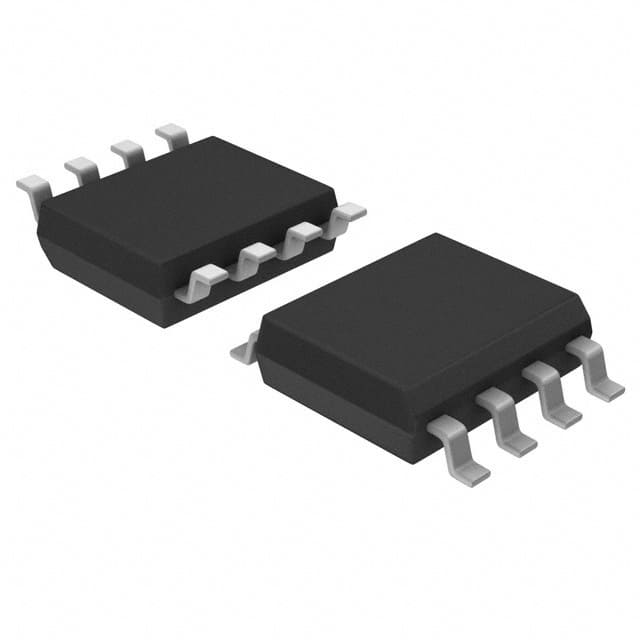Veja as especificações para detalhes do produto.

PCA9306DCTRG4
Product Overview
Category: Integrated Circuits (ICs)
Use: Level Translators
Characteristics: - Bidirectional voltage-level translator - Supports I2C and SMBus protocols - Provides bidirectional voltage translation between low-voltage and high-voltage systems - Allows communication between devices operating at different voltage levels - Prevents damage to sensitive components due to voltage mismatch
Package: SOT-23-6
Essence: The PCA9306DCTRG4 is a level translator IC that enables communication between devices operating at different voltage levels, ensuring compatibility and preventing damage to sensitive components.
Packaging/Quantity: The PCA9306DCTRG4 is available in a SOT-23-6 package. It is typically sold in reels of 3000 units.
Specifications
- Supply Voltage Range: 1.2V to 5.5V
- High-Level Input Voltage (A-side): 0.7 x VCCB
- Low-Level Input Voltage (A-side): 0.3 x VCCB
- High-Level Output Voltage (B-side): 0.7 x VCCA
- Low-Level Output Voltage (B-side): 0.3 x VCCA
- Maximum Continuous Current: 70mA
- Maximum Standby Current: 10µA
- Operating Temperature Range: -40°C to +85°C
Pin Configuration
The PCA9306DCTRG4 has a total of six pins arranged as follows:
___________
| |
A1 | | VCCB
A2 | | SDA
A3 | | SCL
B1 | | GND
B2 | | OE
B3 |___________|
Functional Features
- Bidirectional voltage-level translation: The PCA9306DCTRG4 allows bidirectional translation between low-voltage (A-side) and high-voltage (B-side) systems.
- Automatic direction sensing: The device automatically determines the direction of data flow based on the voltage levels of the A-side and B-side.
- I2C and SMBus compatibility: The IC supports both I2C and SMBus protocols, making it suitable for a wide range of applications.
- Low standby current: The PCA9306DCTRG4 has a low standby current of only 10µA, minimizing power consumption in idle mode.
Advantages and Disadvantages
Advantages: - Enables communication between devices operating at different voltage levels - Protects sensitive components from voltage mismatch - Automatic direction sensing simplifies system design - Supports popular I2C and SMBus protocols - Low standby current minimizes power consumption
Disadvantages: - Maximum continuous current limited to 70mA - Limited to bidirectional voltage-level translation
Working Principles
The PCA9306DCTRG4 utilizes a level-shifting circuit to translate voltage levels between the A-side and B-side. It automatically detects the direction of data flow and adjusts the voltage levels accordingly. The device ensures that signals from the low-voltage side are correctly interpreted by the high-voltage side and vice versa, preventing any damage or miscommunication due to voltage mismatch.
Application Field Plans
The PCA9306DCTRG4 is widely used in various applications where voltage-level translation is required. Some common application fields include:
- Embedded Systems: The IC enables communication between microcontrollers operating at different voltage levels, facilitating seamless integration of various components in embedded systems.
- Consumer Electronics: It is utilized in devices such as smartphones, tablets, and laptops to enable communication between different subsystems operating at different voltage levels.
- Industrial Automation: The PCA9306DCTRG4 is used in industrial automation systems to interface between sensors, actuators, and control units operating at different voltage levels.
- IoT Devices: It finds application in IoT devices where multiple sensors and communication modules need to communicate with a central processing unit operating at a different voltage level.
Alternative Models
- TXB0108PWR: 8-bit bidirectional voltage-level translator with automatic direction sensing.
- SN74LVC4245APW: Octal dual-supply translating transceiver with configurable voltage-level translation.
- BSS138LT1G: Single N-channel logic level enhancement mode field-effect transistor (FET) for voltage-level shifting applications.
These alternative models offer similar functionality and can be considered as alternatives to the PCA9306DCTRG4 based on specific requirements and design constraints.
In conclusion, the PCA9306DCTRG4 is a versatile level translator IC that enables communication between devices operating at different voltage levels. Its bidirectional voltage-level translation, automatic direction sensing, and compatibility with popular
Liste 10 perguntas e respostas comuns relacionadas à aplicação de PCA9306DCTRG4 em soluções técnicas
Sure! Here are 10 common questions and answers related to the application of PCA9306DCTRG4:
Q: What is PCA9306DCTRG4?
A: PCA9306DCTRG4 is a dual bidirectional I2C-bus and SMBus voltage-level translator with an enable (EN) input.Q: What is the purpose of PCA9306DCTRG4?
A: PCA9306DCTRG4 is used to facilitate communication between devices operating at different voltage levels in I2C or SMBus applications.Q: What voltage levels can PCA9306DCTRG4 translate?
A: PCA9306DCTRG4 can translate voltage levels between 1.2V and 5.5V.Q: How many channels does PCA9306DCTRG4 have?
A: PCA9306DCTRG4 has two bidirectional channels, allowing translation in both directions.Q: Can PCA9306DCTRG4 be used for level shifting in other protocols besides I2C and SMBus?
A: While PCA9306DCTRG4 is primarily designed for I2C and SMBus, it can also be used for level shifting in other protocols with similar voltage requirements.Q: Does PCA9306DCTRG4 require external pull-up resistors?
A: Yes, external pull-up resistors are required on the SDA and SCL lines for proper operation.Q: What is the maximum data rate supported by PCA9306DCTRG4?
A: PCA9306DCTRG4 supports a maximum data rate of 400kHz.Q: Can PCA9306DCTRG4 handle hot-swapping of devices?
A: Yes, PCA9306DCTRG4 is designed to handle hot-swapping of devices without causing any damage.Q: What is the typical operating current consumption of PCA9306DCTRG4?
A: The typical operating current consumption of PCA9306DCTRG4 is around 1.5mA.Q: Is PCA9306DCTRG4 available in different package options?
A: Yes, PCA9306DCTRG4 is available in various package options, including SOIC-8 and VSSOP-8.
Please note that these answers are general and may vary depending on the specific application and requirements. It is always recommended to refer to the datasheet and consult with the manufacturer for detailed information.

